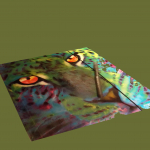sanasinko

![]()
Tärkeää tietoa:
"Olen sairastunut vakavasti. Pelkään syöpää. Mitä teen?"
https://cutt.ly/8wGguck
Etsivä löytää - ja kolkuttavalle avataan?
https://tinyurl.com/wo758hp
https://my.su/e01
Päivitystä:
Mustia pilviä taivaalla: sieni-infektio
https://goo.gl/1Bm2ZG
Tietoisku:
Sieni-infektiot jylläävät siellä missä ihmisetkin!
https://goo.gl/89jtvs
Borrelioosin uhrit kärsivät monista eri sairauksista,
tärkeää uutta tutkimustietoa! https://goo.gl/tyxx5k
Arkistoitua: https://goo.gl/6DXsQr
Kryptolepistä hometta, Lymeä ja parasiitteja vastaan
https://tinyurl.com/yy8hxmea
Loishäädöstäkin apua vatsantärinään
https://tinyurl.com/y4knzcbd
Ei edes oikeita lääkkeitä näillä leveyspiireillä!
https://tinyurl.com/slqz4p4
Lääkäreiden kieltämiä sairauksia ei tutkita eikä hoideta
https://tinyurl.com/yxzjoaxa
Älä lausu väärää lääkärintodistusta lähimmäisestäsi
https://tinyurl.com/u8qtwqv
Pyydä ja tarjoa vertaistukea: https://helppi.palstani.com/
https://narsissi.palstani.com/
Kirjoitusarkistoa: https://write.as/wordbazooka/
Sitten kun jaksetaan taas, tavataan täällä: http://www.sanasinko.net/
Kokemaani helvettiä olematta ohi vieläkään: https://goo.gl/TCuUhd
Kiusanteon takia ja voimien ollessa vähissä postannut tänne lähinnä viestejä vaan lukematta vastauksia ja pitäessäni https://goo.gl/PfyG96 taukoa. Parhaiten tavoittaa sähköpostitse [email protected], jos jotain asiaa.
https://www.youtube.com/user/Taivaanlahjat/videos/
Aloituksia
377
Kommenttia